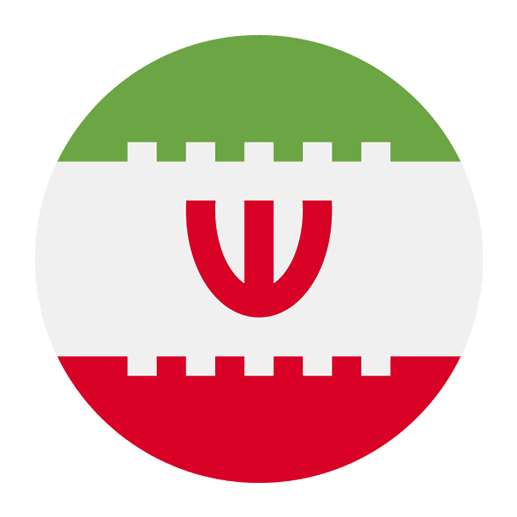Persian literature, with its rich history and profound cultural significance, offers a fascinating journey for language learners. Spanning over a millennium, it encompasses a variety of genres and styles, reflecting the complexities and beauty of Persian civilization. This article aims to provide an overview of Persian literature, highlighting key authors, works, and themes, while offering practical tips for learners to navigate this rich literary tradition.
The Historical Context of Persian Literature
Persian literature, also known as Farsi literature, dates back to the 9th century AD. It has its roots in the ancient Persian Empire, and it has evolved through various dynasties, including the Sassanian, Safavid, and Qajar periods. Understanding this historical context is essential for grasping the development and themes of Persian literature.
The advent of Islam in the 7th century profoundly influenced Persian culture and literature. The incorporation of Islamic themes and the Persian adaptation of Arabic script shaped the literary landscape. Persian poets and writers often blended pre-Islamic traditions with Islamic concepts, creating a unique and rich literary heritage.
The Golden Age of Persian Poetry
The Golden Age of Persian poetry, spanning from the 10th to the 15th centuries, is considered the pinnacle of Persian literary achievement. During this period, several iconic poets emerged, whose works continue to be celebrated worldwide.
1. Ferdowsi (940-1020)
Ferdowsi’s magnum opus, the “Shahnameh” (Book of Kings), is an epic poem that recounts the history of Persia from its mythical origins to the Islamic conquest. Comprising over 50,000 couplets, the “Shahnameh” is one of the longest epic poems ever written. Ferdowsi’s work not only preserves Persian history and mythology but also serves as a testament to the resilience of Persian culture.
2. Rumi (1207-1273)
Jalal ad-Din Muhammad Rumi, commonly known as Rumi, is one of the most famous Persian poets globally. His works, including the “Masnavi” and the “Divan-e Shams-e Tabrizi,” explore themes of love, spirituality, and the human condition. Rumi’s poetry is characterized by its deep mysticism and lyrical beauty, making it accessible and appealing to readers of all backgrounds.
3. Hafez (1315-1390)
Hafez, another towering figure in Persian poetry, is celebrated for his “Divan,” a collection of ghazals (lyric poems). Hafez’s poetry delves into themes of love, wine, and the divine, often using rich symbolism and metaphors. His work is revered for its emotional depth and linguistic elegance, and it continues to inspire readers and scholars alike.
Prose in Persian Literature
While Persian poetry often takes the spotlight, Persian prose also boasts a rich tradition. Persian prose encompasses a variety of genres, including historical chronicles, philosophical treatises, and mystical writings.
1. Saadi (1210-1291)
Saadi is renowned for his prose works, particularly the “Gulistan” (Rose Garden) and the “Bustan” (Orchard). The “Gulistan” is a collection of moral stories and reflections, presented in a mix of prose and poetry. Saadi’s writing is characterized by its wisdom, wit, and humanistic outlook, making it a valuable resource for language learners seeking to understand Persian culture and values.
2. Attar (1145-1221)
Farid ud-Din Attar, a Persian Sufi poet and theoretician, is best known for his prose work “The Conference of the Birds.” This allegorical narrative follows a group of birds on a spiritual quest to find their king, symbolizing the soul’s journey toward enlightenment. Attar’s prose is richly imbued with Sufi philosophy and offers profound insights into the spiritual dimensions of Persian literature.
Modern Persian Literature
The 19th and 20th centuries witnessed significant transformations in Persian literature, reflecting broader social and political changes in Iran. Modern Persian literature encompasses a wide range of genres, including novels, short stories, and contemporary poetry.
1. Sadegh Hedayat (1903-1951)
Sadegh Hedayat is considered one of the pioneers of modern Persian literature. His novella “The Blind Owl” is a seminal work that delves into themes of existential despair and psychological trauma. Hedayat’s innovative narrative style and exploration of dark, complex themes marked a departure from traditional Persian literature and paved the way for future writers.
2. Forugh Farrokhzad (1935-1967)
Forugh Farrokhzad is one of the most prominent female poets in modern Persian literature. Her poetry, including collections like “The Captive” and “Another Birth,” explores themes of love, identity, and social issues. Farrokhzad’s bold and expressive style challenged societal norms and expanded the boundaries of Persian poetry.
Thematic Diversity in Persian Literature
Persian literature is characterized by its thematic diversity, reflecting the multifaceted nature of Persian culture and society. Some of the recurring themes in Persian literature include:
1. Love and Mysticism
Love, both earthly and divine, is a central theme in Persian literature. Mystical love, often associated with Sufi philosophy, explores the soul’s longing for union with the divine. This theme is prevalent in the works of poets like Rumi and Hafez, whose verses evoke a deep sense of spiritual yearning and transcendence.
2. Heroism and Kingship
The theme of heroism and kingship is prominent in Persian epic poetry, particularly in the “Shahnameh.” This theme reflects the historical and cultural significance of heroic figures and monarchs in Persian society. The portrayal of legendary heroes and wise kings serves as a source of inspiration and moral guidance.
3. Social Critique and Satire
Persian literature has a long tradition of social critique and satire. Writers like Saadi and Hedayat used their works to comment on societal issues, hypocrisy, and injustice. This tradition continues in contemporary Persian literature, where authors address modern social and political challenges.
Practical Tips for Navigating Persian Literature
For language learners, navigating Persian literature can be both rewarding and challenging. Here are some practical tips to help you on your journey:
1. Start with Bilingual Editions
Bilingual editions of Persian literary works, with parallel texts in Persian and English, can be immensely helpful. These editions allow you to compare the original Persian text with its English translation, aiding comprehension and vocabulary acquisition.
2. Focus on Poetry
Persian poetry, with its rhythmic and lyrical qualities, is an excellent starting point for language learners. Poems are often shorter than prose works, making them more manageable. Begin with well-known poets like Rumi, Hafez, and Saadi, whose works are widely available in translation.
3. Use Glossaries and Annotations
Many editions of Persian literary works come with glossaries and annotations that explain cultural references, archaic language, and difficult vocabulary. These resources can enhance your understanding and appreciation of the text.
4. Engage with Audio and Visual Resources
Listening to recitations of Persian poetry and prose can improve your pronunciation and listening skills. Many online platforms offer audio recordings and video performances of Persian literary works. Engaging with these resources can also help you appreciate the musicality and rhythm of the language.
5. Join a Language Learning Community
Joining a language learning community, either online or in-person, can provide valuable support and motivation. Discussion groups, book clubs, and language exchange programs offer opportunities to share insights, ask questions, and practice your language skills with fellow learners.
Conclusion
Navigating Persian literature is a journey into the heart of Persian culture and history. From the epic tales of Ferdowsi to the mystical verses of Rumi, from the moral reflections of Saadi to the modern narratives of Hedayat, Persian literature offers a rich tapestry of themes, styles, and voices. By immersing yourself in this literary tradition, you not only enhance your language skills but also gain a deeper understanding of the Persian worldview.
Remember, the journey of language learning is a gradual process. Be patient with yourself, and savor the beauty and wisdom that Persian literature has to offer. Whether you are drawn to the lyrical poetry of Hafez, the philosophical musings of Rumi, or the contemporary narratives of modern Persian authors, there is a wealth of literary treasures waiting to be discovered. Happy reading!

